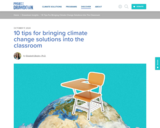
Tips for middle and secondary educators in best ways to bring climate change solutions into their classrooms throughout the curriculum.
- Subject:
- Education
- Material Type:
- Teaching/Learning Strategy
- Author:
- Elizabeth Bagley
- Date Added:
- 10/23/2024

Tips for middle and secondary educators in best ways to bring climate change solutions into their classrooms throughout the curriculum.
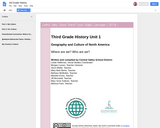
The unit is focused on the examination of geography in terms of “place.” Students dive into inquiry to answer the compelling questions, “Where are we?” and “Who are we?” Through these two questions students will understand where they live and where people around the world live. Students will also dive into the term “culture” and define it through many characteristics. Students will examine and reflect upon their own culture and research different cultures of North America.
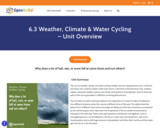
This unit on weather, climate, and water cycling is broken into four separate lesson sets. In the first two lesson sets, students explain small-scale storms. In the third and fourth lesson sets, students explain mesoscale weather systems and climate-level patterns of precipitation. Each of these two parts of the unit is grounded in a different anchoring phenomenon.
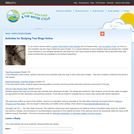
Selected resources provide three web-based activities to complement science lessons in an issue of Beyond Weather and the Water Cycle. The free, online magazine for Grades K-5 teachers explores the essential principles of climate literacy.
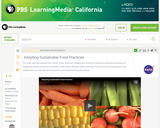
Hear about how respect for Earth can help us attain a more sustainable lifestyle in the face of climate change in this video segment adapted from United Tribes Technical College.
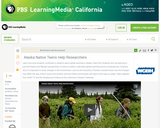
In this video adapted from KUAC-TV and the Geophysical Institute at the University of Alaska, Fairbanks, Alaska Native students contribute to research on how their environment is changing as a result of global warming.
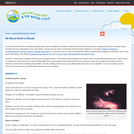
In this informational text, elementary school readers learn about the difference between weather and climate and about components of the climate system. The text can be used to practice visualizing and other comprehension strategies. Available in K-2 and 3-5 grade bands and as an illustrated book as well as a text document, the story appears in the online magazine Beyond Weather and the Water Cycle.
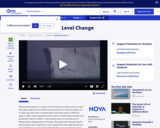
What would happen if a portion of the Antarctic Ice Sheet were to melt? This video segment adapted from NOVA uses animations to show the effect of a 6-meter sea-level rise on coastal cities across the world.
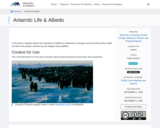
In this lesson, students explore the importance of albedo (or reflectivity) to penguins and the surfaces they inhabit and learn how penguin colonies may be mapped using satellites.
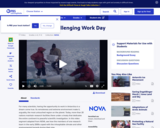
What happens when the ground under your feet is ice and it's moving? This video segment adapted from NOVA features some of the dangers faced by scientists conducting research in Antarctica.

This article includes links to expository text for students in grades K-1, 2-3, and 4-5 about the climate differences between the Arctic and Antarctica.

In this lesson, students investigate whether other parts of the world are changing and getting hotter just like Colorado.
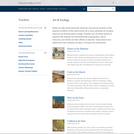
Artists are often particularly keen observers and precise recorders of the physical conditions of the natural world. As a result, paintings can be good resources for learning about ecology. Teachers can use this lesson to examine with students the interrelationship of geography, natural resources, and climate and their effects on daily life. It also addresses the roles students can take in caring for the environment. Students will look at paintings that represent cool temperate, warm temperate, and tropical climates.
In this lesson students will: Identify natural resources found in particular geographic areas; Discuss ways in which climate, natural resources, and geography affect daily life; Apply critical-thinking skills to consider the various choices artists have made in their representations of the natural world; Make personal connections to the theme by discussing ways they can be environmental stewards; Identify natural resources found in particular geographic areas; Discuss ways in which climate, natural resources, and geography affect daily life; Apply critical-thinking skills to consider the various choices artists have made in their representations of the natural world; Make personal connections to the theme by discussing ways they can be environmental stewards.

This undergraduate class is designed to introduce students to the physics that govern the circulation of the ocean and atmosphere. The focus of the course is on the processes that control the climate of the planet.
Acknowledgments
Prof. Ferrari wishes to acknowledge that this course was originally designed and taught by Prof. John Marshall.
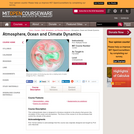
This undergraduate class is designed to introduce students to the physics that govern the circulation of the ocean and atmosphere. The focus of the course is on the processes that control the climate of the planet.
Acknowledgments
Prof. Ferrari wishes to acknowledge that this course was originally designed and taught by Prof. John Marshall.
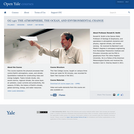
This course explores the physical processes that control Earth's atmosphere, ocean, and climate. Quantitative methods for constructing mass and energy budgets. Topics include clouds, rain, severe storms, regional climate, the ozone layer, air pollution, ocean currents and productivity, the seasons, El Nio, the history of Earth's climate, global warming, energy, and water resources.
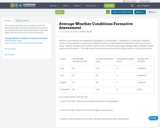
This resource provides a short reading section with experimental data and a few questions about the text. It was created with standardized assessment in mind and aligned with Next Generation Science Standards.

As the world grapples with the escalating challenges of climate change, the legal profession finds itself at a crossroads. Becoming a Climate Conscious Lawyer: Climate and the Australian Legal System provides an original, innovative, and accessible analysis of the impact of climate change on legal doctrines and principles. It offers an overview of cutting-edge developments and how the transition to a low-carbon society is reshaping a wide range of laws, from corporate to criminal law, and beyond.
This valuable new resource supports legal professionals, law students, and legal educators to understand current legal challenges – providing the know-how to strategically navigate, and positively influence, the development of law to respond to a climate changed world. The book delivers a transformative approach to legal education: equipping law students to become climate-conscious professionals with the confidence and competency to deliver legal solutions to a diverse range of clients, and promote climate justice across diverse communities.

Biology is designed for multi-semester biology courses for science majors. It is grounded on an evolutionary basis and includes exciting features that highlight careers in the biological sciences and everyday applications of the concepts at hand. To meet the needs of today’s instructors and students, some content has been strategically condensed while maintaining the overall scope and coverage of traditional texts for this course. Instructors can customize the book, adapting it to the approach that works best in their classroom. Biology also includes an innovative art program that incorporates critical thinking and clicker questions to help students understand—and apply—key concepts.
